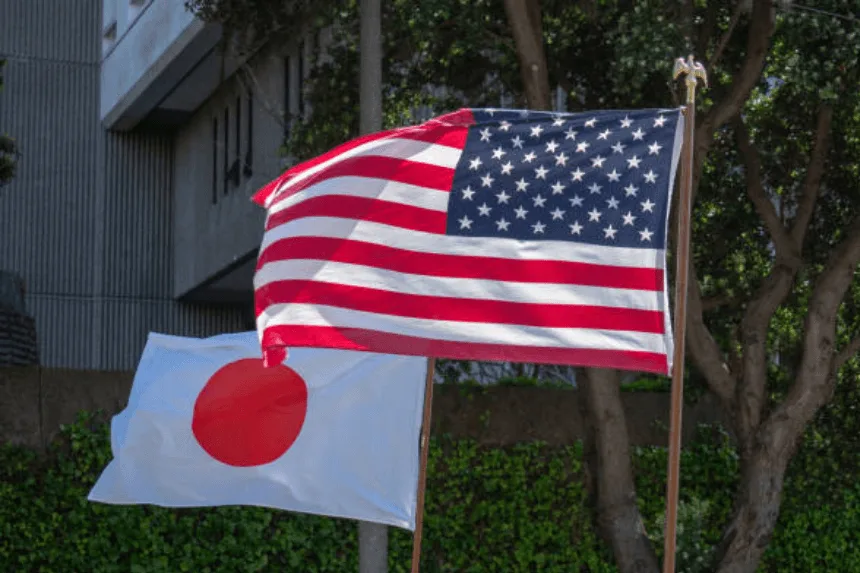Shigeru Ishiba, the Prime Minister of Japan, has called US President Donald Trump’s new promise to raise tariffs “deeply regrettable.” This declaration followed the announcement that Japanese goods would be subject to a 25% tax. Japan, a long-time friend of the US, has been trying to avert this for months.
- What does this mean for the stability of trade around the world?
- Can Longer Deadlines Help Us Find Real Solutions?
- What does this mean for businesses and consumers around the world?
- What Countries Are Losing the Most Ground?
- Is Japan’s Strategic Patience Paying Off?
- Is the US losing power in Asia?
- What’s going to happen next in the trade war between the US and Japan?
The trade war between the US and Japan started after extensive talks about trade, during which Japan tried many times to get concessions. Tokyo has tried to defend its auto sector, which is a key element of its economy, while also refusing to give in to demands to buy more American agricultural goods, especially rice.
Even with these efforts, not much progress has been made. Since Trump’s first tariff pronouncements in April, Japanese negotiators have been to Washington at least seven times. But the conversations haven’t gone very well. As his anger grew, Trump’s language changed from “tough” to “spoiled” when talking about Japan.
Japan is now one of 23 nations that have received tariff warning letters. Fourteen of these countries are in Asia. These include economies that depend on exports, including South Korea, Sri Lanka, and others. This shows that the effects will be felt more widely throughout the region.
What does this mean for the stability of trade around the world?
The stakes are bigger now. Trump has put a 35% tax on items from Canada and said that all imports from other countries could go up by as much as 20%.
Trump told the press, “We’re just going to say that all of the other countries are going to pay, whether it’s 20% or 15%.” Many trading partners, especially those who have had strong diplomatic and military relations with the US for a long time, are astonished by this action.
Countries all over the world, including Japan, now have until August 1 to work out a deal with the US. But Tokyo’s failure to get good terms despite early and ongoing talks shows that even important allies may not be treated differently.
This makes the US-Japan trade war more urgent and unclear. It looks more and more like part of a bigger plan to change how trade works around the world.
Can Longer Deadlines Help Us Find Real Solutions?
The new deadline technically offers countries three additional weeks to reach an agreement. Some people think that this could make people more likely to work out their problems through discussion instead of fighting.
People in emerging economies like Thailand and Malaysia are especially worried. As industrial hubs, they are hurt by the US’s efforts to stop transhipped commodities, which are Chinese exports that move through third nations to dodge duties.
Trade experts say that Trump’s demands are not always clear. For example, Vietnam’s arrangement has taxes on items that are exported via the country, but it’s not clear if this applies to all parts or simply finished products.
To clear up this kind of confusion, we need better monitoring, more openness in the supply chain, and working together with logistical partners and internet companies. The trade war between the US and Japan shows that modern trade enforcement isn’t just about tariffs anymore; it’s also about keeping track of where things come from and how they get there.
What does this mean for businesses and consumers around the world?
The trade war between the US and Japan is having ramifications that go beyond their borders. Companies that do business in more than one market, especially the US, China, and the EU, now have to deal with new dangers.
Both exporters and importers are affected by these levies. American enterprises that rely on parts from other countries may have to pay more. Prices of common items, from electronics to household supplies, may go up for consumers.
Asian economies, which have gotten rich over the past few decades by making things, are especially at risk. Exporters in these nations could lose important US customers or have to change the way they get their goods.
It’s easy to pick out winners and losers, but the truth is that global trade is too intertwined for that to be possible. But nations like Cambodia or Sri Lanka, which don’t have a lot of money and can’t negotiate well, will probably be the hardest hit. Read another article on the Trade War Manufacturing Impact
What Countries Are Losing the Most Ground?
At first, it looked like Vietnam would get an early agreement, but now it has to pay tariffs of up to 40%, which is one of the highest rates so far. Cambodia’s economy is smaller and weaker; thus it is negotiating under the threat of 35% tariffs.
On the other hand, Japan and South Korea, which are more developed, have more political and economic power. India hasn’t gotten a tariff warning letter yet, but the two sides are still talking, mostly about access to agriculture and complicated procedures for imports.
The trade war between the US and Japan shows that richer countries may have more options. But even they have to deal with changes in US policy that are hard to forecast, which makes things unstable for both governments and investors.
Is Japan’s Strategic Patience Paying Off?
Japan has refused to give up on some important topics, even if the pressure is growing. Even if there is a shortage of rice in Japan,whicht has caused prices to go up, Prime Minister Ishiba still won’t let the US import rice to safeguard local farmers.
When tariffs were first announced in April, Japan’s government acted quickly. Officials said there was an economic emergency and set up hundreds of consultation centers to help firms that were hurt.
Experts think that Japan is in it for the long haul. One analyst said, “Japan will be looking for a deal that is credible,” and he pointed out that Tokyo is skeptical of any accord that could be changed at any time.
With the upper house elections coming up, any quick compromise might be bad for politics. That makes it doubtful that a deal will be reached before the August 1 deadline, but analysts think the chance of a Japanese recession is still low.
Is the US losing power in Asia?
Asia has always been an important place for politics, especially when it comes to the US and China competing with each other. Some experts say that the trade war between the US and Japan is making Washington less powerful in the area.
People are surprised that the government chose to put tariff letters online instead of using normal diplomatic procedures. People who don’t like it call it “political theater” instead of real negotiation.
China benefits from this lack of clarity. Beijing is deliberately trying to make itself look like a more solid and reliable trading partner, even though it is in the middle of its discussions with the US, which are due to end on August 13.
But many Asian countries still have problems with China, which makes it hard for them to find a new economic partner. The outcome of this war could change trade routes, alliances, and the balance of power for a long time.
What’s going to happen next in the trade war between the US and Japan?
The trade fight between the US and Japan is only one element of a bigger change in global trade. As the US renegotiates a number of trade deals, uncertainty keeps growing.
Some economists say that this “reset” could take years to work out. You can’t change trade relationships that have been around for decades suddenly. One analyst added, “Both sides see the need for a divorce.” “But getting there will be a long and difficult process.”
This fight is about more than simply tariffs; it’s about who has the most power in the world economy and who leads the world in the 21st century.








